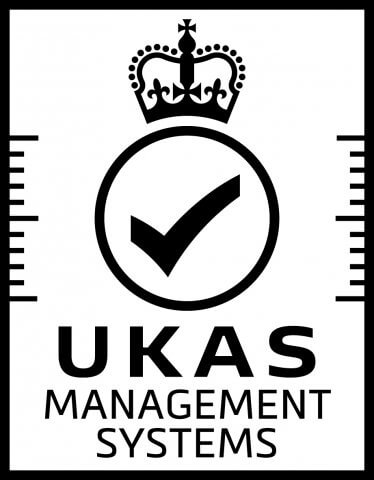Nipples play an intimate, essential role in how we feel about our appearance. An imperfection like an inverted nipple or an oversized areola can make us feel uncomfortable and self-conscious about our bodies.
It can be challenging to feel happy about your body when faced with aspects of yourself that you don’t like. Having an inverted or deformed nipple can make us not want to swim, change in public changing rooms, or even be intimate with other people.
Inverted nipples and large areolas can occur in both men and women, and they can easily be corrected with the right cosmetic surgery procedure. Inverted nipples affect between 10% – 20% of the general population, so it’s not an uncommon condition.
Today we’re going to go through a quick guide on inverted nipple correction and areola reduction surgery.
What is an inverted nipple?
Inverted nipples are an issue that can affect both men and women, but it’s more commonly seen in women. 9-10% of women have at least one inverted nipple.
They’re not dangerous, but they can make us feel uneasy about our bodies.
Many women also find that inverted nipples make breastfeeding difficult and sensitive to both temperature and touch.
A nipple can be misformed at birth, and when a child hits puberty, it becomes inverted.
If your nipple becomes inverted after puberty, then it’s a good idea to contact your gynaecologist as it needs further investigation.
Why do inverted nipples affect breastfeeding?
Inverted nipples make it a bit difficult for a baby to latch on, but it is still possible to breastfeed. If your baby can’t latch on, you can still use a breast pump if you have inverted nipples.
What happens during inverted nipple correction procedures?
During your consultation, you’ll be able to discuss the options available to you with your doctor. Depending on your case, you might be able to avoid surgery but still get your inverted nipple corrected.
Inverted nipple correction is a minor surgical procedure that’s performed under a local anaesthetic. It has a short recovery period, and the process itself lasts about 30 minutes or so.
This surgery can help you regain a normal nipple appearance plus it’s a safe and quick operation, so you’ll only have to spend a day at your chosen clinic.
There are two different forms of nipple inversion surgery:
- The surgeon detaches the milk ducts to correct the nipple. This will however prevent a woman from being able to breastfeed in the future.
- The surgeon can pull the nipple out and support it with a loop. Women can breastfeed after this surgery as the milk duct stays intact.
What is areola reduction surgery?
Areola reduction surgery is performed on both men and women.
For women, large areolas can be caused by:
- Large breasts
- Pregnancy
- Sagging breasts
- Tubular breasts
For men, a large areola is associated with male breast enlargement or gynecomastia.
Many women get areola reduction surgery at the same time as another breast augmentation surgery to help them feel more confident about their breasts. Men tend to get areola reduction surgery performed to feel less embarrassed about their chest, as large areolas can often make their chest look more feminine.
Can you breastfeed after areola reduction?
On its own, areola reduction won’t affect the ability to breastfeed. If you’re planning on having children and are thinking of breastfeeding them, it’s a good idea to get the areola reduction procedure performed after you’ve had your children. This is because your breasts will probably change shape during pregnancy and when you breastfeed.
What happens during areola reduction surgery?
Areola reduction is quite a minor surgical procedure, and it only takes about an hour to complete. It’s performed under local anaesthesia, and you only have to spend the day in the clinic.
Your doctor will make an incision around the areola and remove the excess areola. Only the nipple and the central portion of your areola will remain attached to your breast after surgery.
Fine sutures will then be placed under the skin to reattach the areola to your surrounding skin.
After surgery, you’ll be given a special surgical bra to wear to keep your breasts in the best position for healing.
What is recovery like after inverted nipple or areola reduction surgery?
After your nipple corrective surgery, the first couple of days might be a bit painful. This can easily be controlled though with some over-the-counter pain medication like paracetamol.
You’ll be able to resume your regular daily activities within 48 hours after the surgery. If you have any questions or concerns during your recovery, be sure to call your surgeon, as they’ll be able to advise and assist you, so you make a full recovery.
Are there any risks with inverted nipple correction surgery or areola reduction surgery?
Every surgery includes risks, even cosmetic surgery. Some of the risks involved with inverted nipple correction surgery are:
- Infection
- Pain
- Scarring
- Recurrence (return of the inversion)
The risks are minimal as these are relatively simple and safe operations.
You’ll be able to talk to your doctor about all the risks and potential complications in your consultation.
You’ll also be given a detailed copy in writing so you’ll be able to think about them in your own time before committing to any surgery. If you have any questions or concerns about your surgery, then be sure to ask your doctor during your consultation.
We hope we’ve helped you understand a bit more about inverted nipple correction and areola reduction surgery.
If you’re interested in getting inverted nipple correction or areola reduction surgery, then the team at Auralia is here to help.
We have an experienced team that can help give you a look that you’ve always dreamed about.
Please get in contact with one of our team members today to book a call and learn more about our inverted nipple correction or areola reduction surgery.





